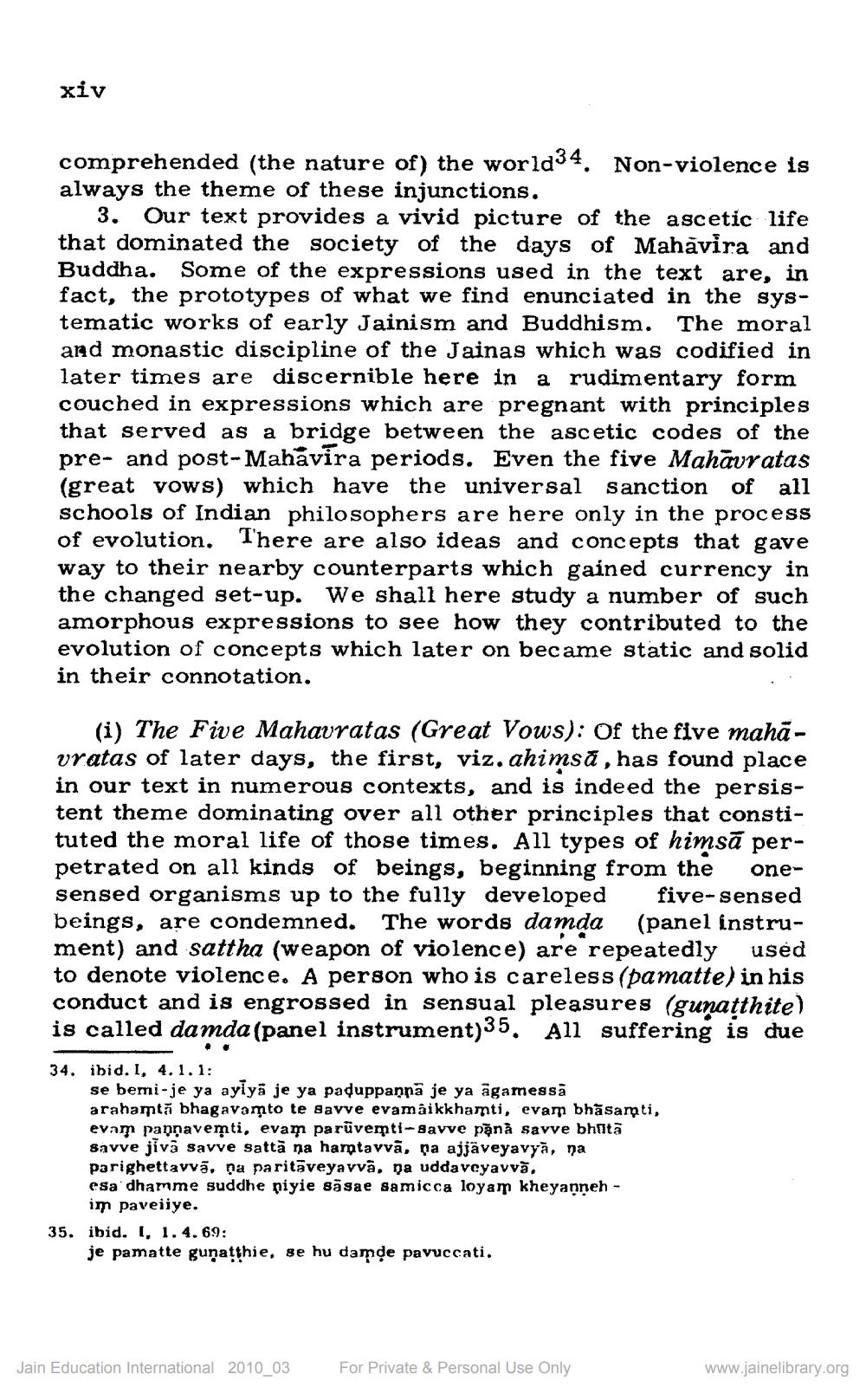________________
xiv
comprehended (the nature of) the world34. Non-violence is always the theme of these injunctions.
3. Our text provides a vivid picture of the ascetic life that dominated the society of the days of Mahavira and Buddha. Some of the expressions used in the text are, in fact, the prototypes of what we find enunciated in the systematic works of early Jainism and Buddhism. The moral and monastic discipline of the Jainas which was codified in later times are discernible here in a rudimentary form couched in expressions which are pregnant with principles that served as a bridge between the ascetic codes of the pre- and post-Mahavira periods. Even the five Mahāratas (great vows) which have the universal sanction of all schools of Indian philosophers are here only in the process of evolution. There are also ideas and concepts that gave way to their nearby counterparts which gained currency in the changed set-up. We shall here study a number of such amorphous expressions to see how they contributed to the evolution of concepts which later on became static and solid in their connotation.
(i) The Five Mahavratas (Great Vows): Of the five mahā - vratas of later days, the first, viz. ahimsā , has found place in our text in numerous contexts, and is indeed the persistent theme dominating over all other principles that constituted the moral life of those times. All types of himsā perpetrated on all kinds of beings, beginning from the onesensed organisms up to the fully developed five-sensed beings, are condemned. The words damda (panel instrument) and sattha (weapon of violence) are repeatedly used to denote violence. A person who is careless (pamatte) in his conduct and is engrossed in sensual pleasures (gunatthite) is called damda (panel instrument)35. All suffering is due
34. ibid. I, 4.1.1:
se bemi-je ya ayiyā je ya paduppanpa je ya ägamessä arahamtă bhagavamto te savve evamaikkhamti, evam bhāsamti, evam pannavemti, evam parūvemti-Savve pânà savve bhita Savve jivā savve sattā na hamtavva, pa ajjaveyavya, na parighettavvā. na paritāveya vvâ, pa uddavcyavvă. esa dhamme suddhe piyie sägae samicca loyam kheyannen -
im paveiiye. 35. ibid. I, 1. 4.69:
je pamatte guņatthie, se hu damde pavuccati.
Jain Education International 2010_03
For Private & Personal Use Only
www.jainelibrary.org




